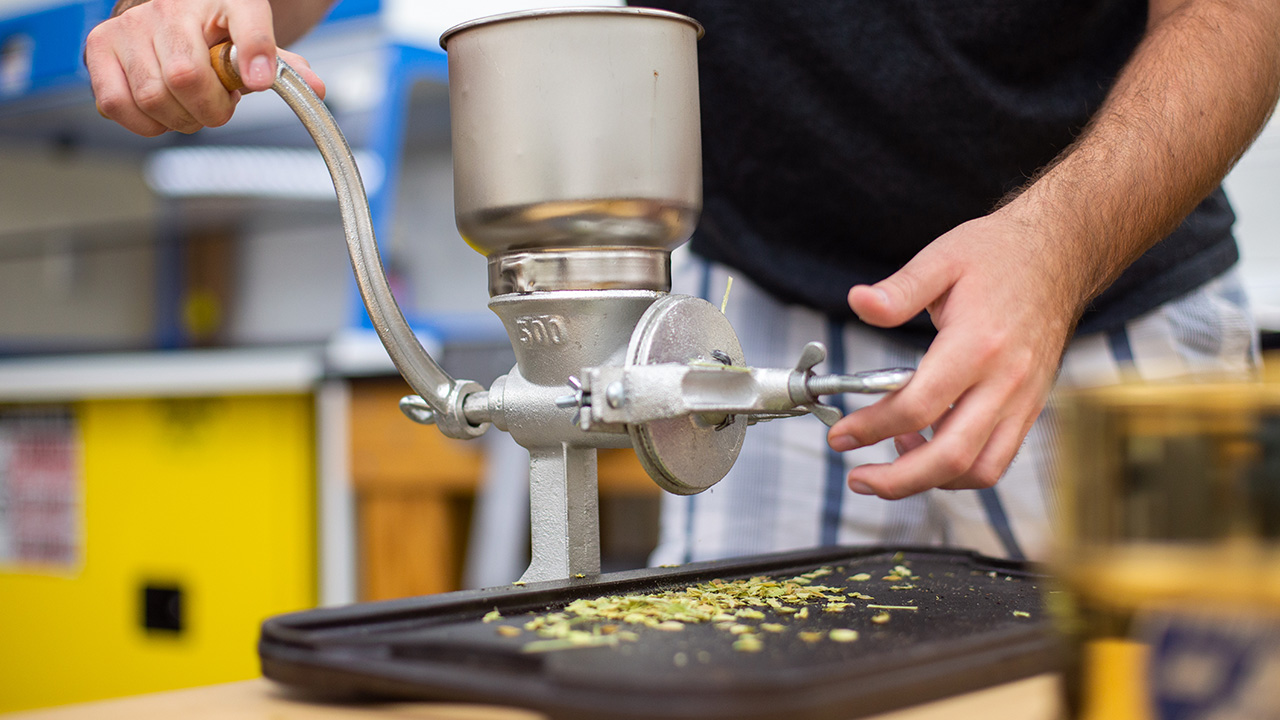
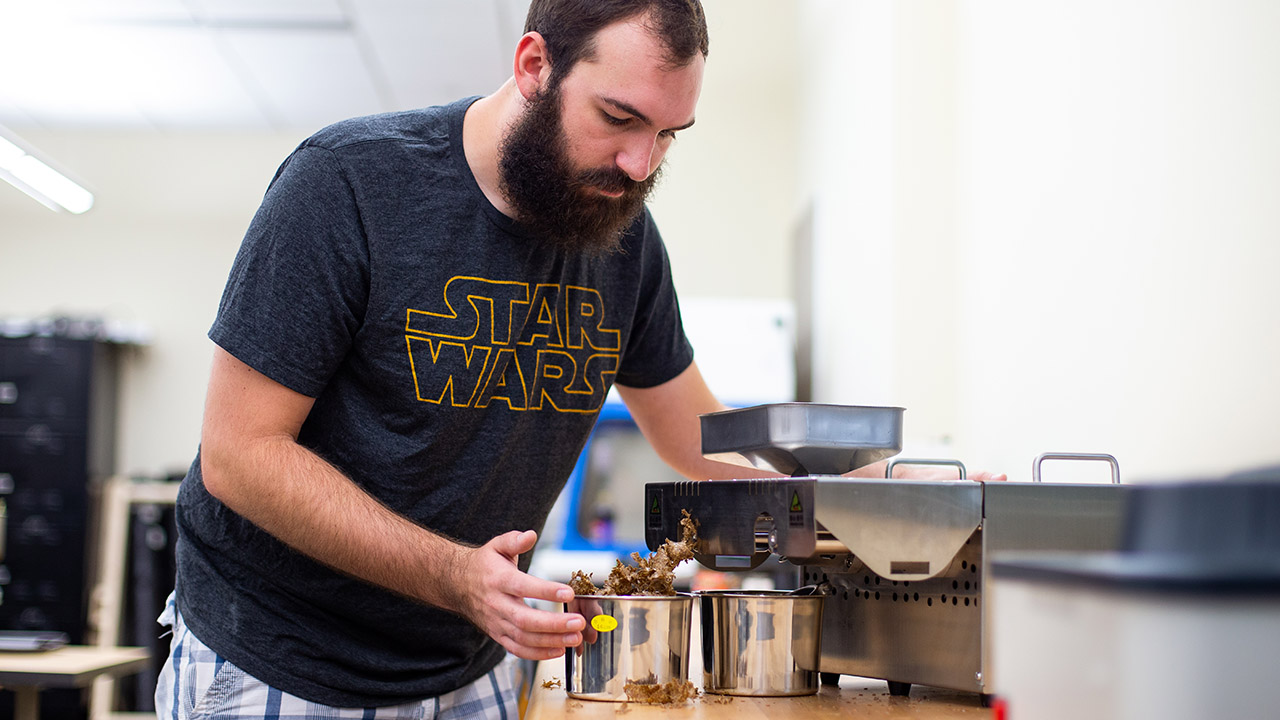
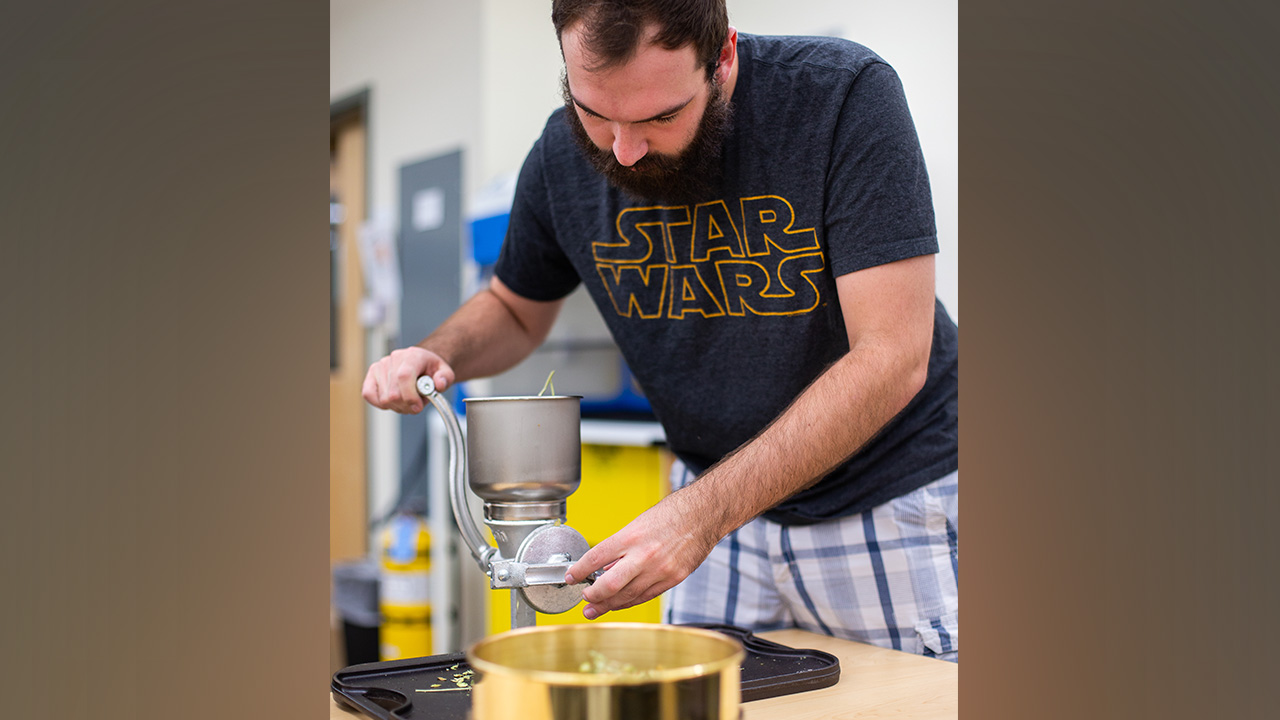
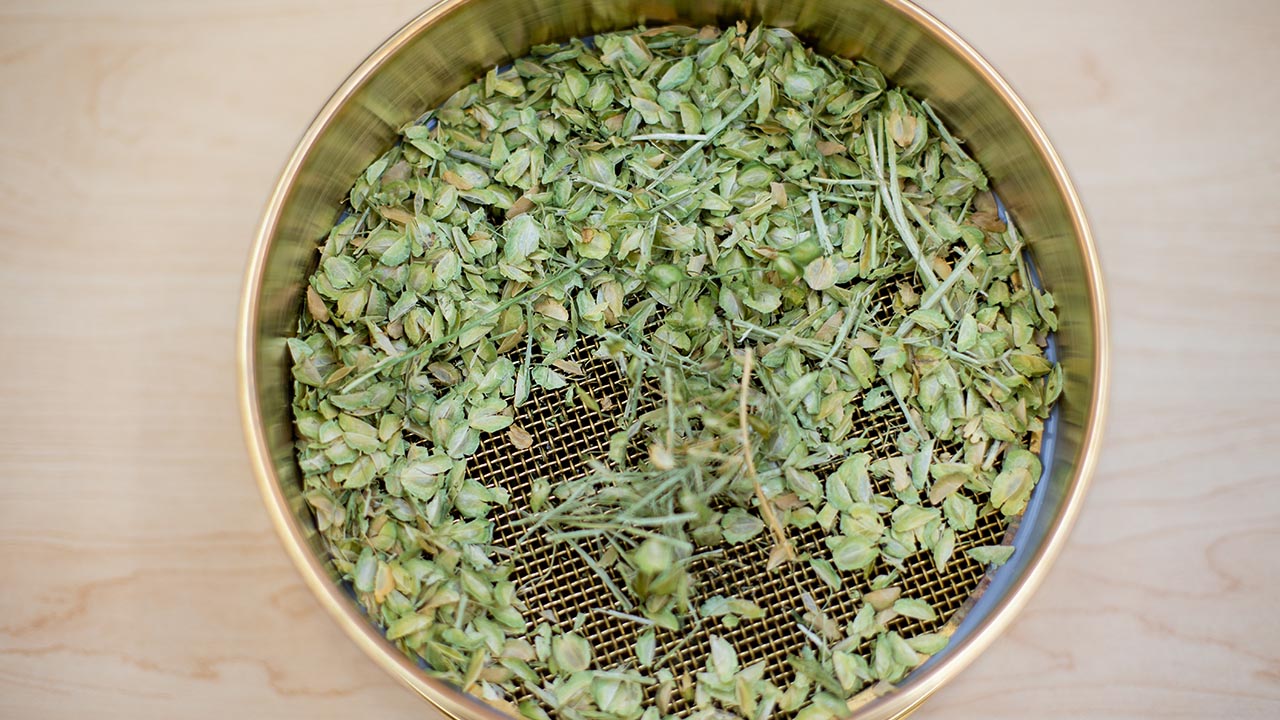
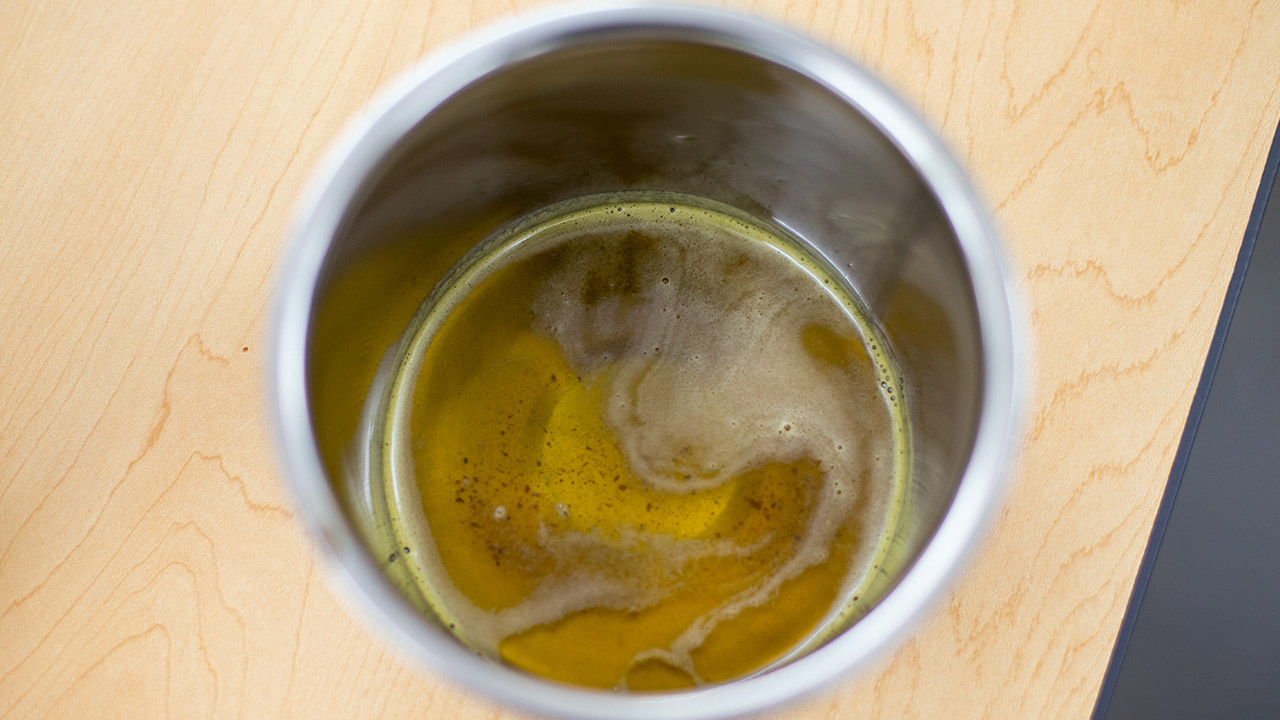
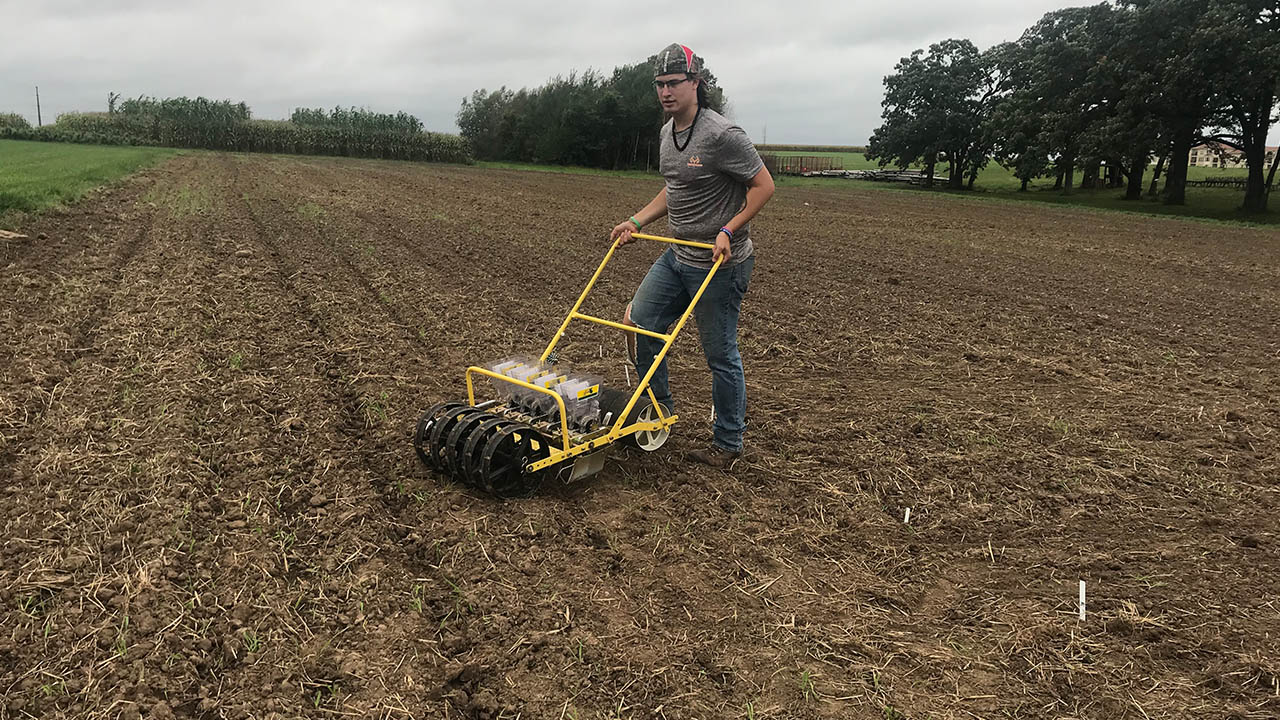
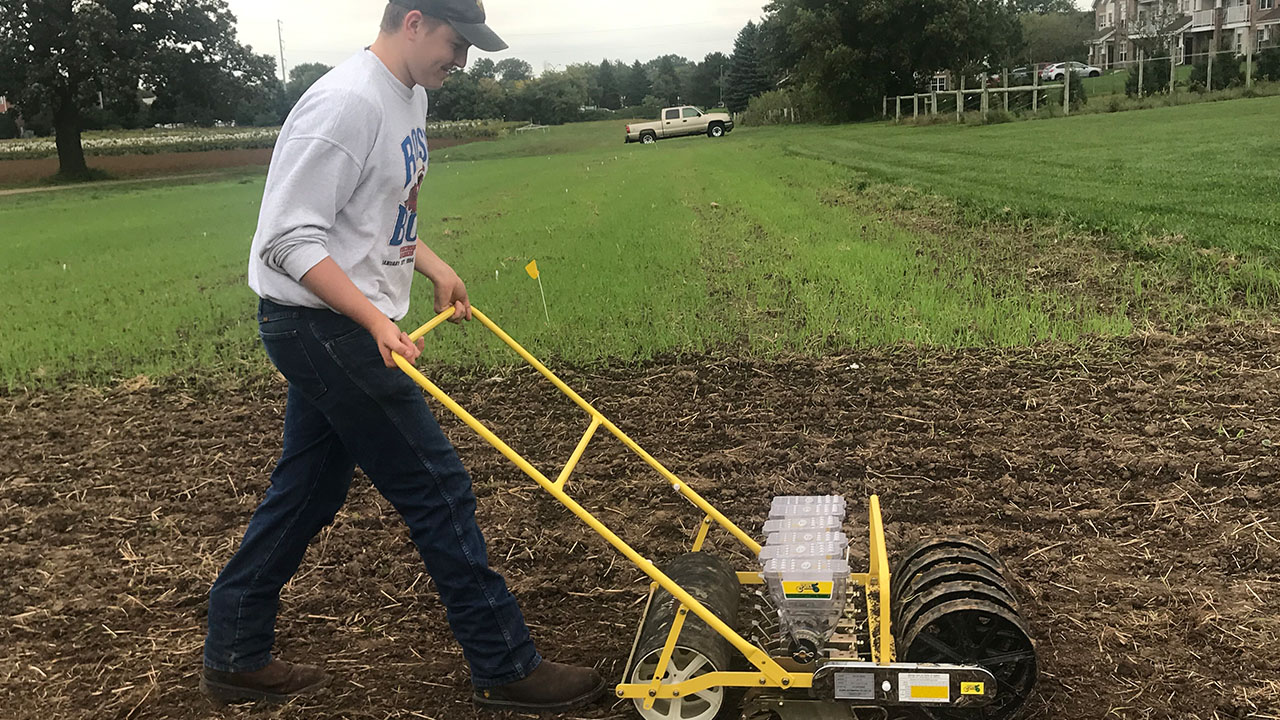
The next big idea in green energy may stem from a common Midwestern weed called pennycress, and faculty and students at the University of Wisconsin-Platteville are contributing to this cutting-edge research.
Dr. Pamela Tas, assistant professor and coordinator of UW-Platteville’s Sustainability and Renewable Energy Systems program, is embarking on her second year of research with pennycress, and exploring its potential as a cash-cover crop that can be commercialized for green aviation fuel and biodiesel. Last month, Western Illinois University announced a $10 million U.S. Department of Agriculture National Institute of Food and Agriculture grant, which will allow a team of researchers – including Tas – to continue and expand this research.
Pennycress is a common weed in North America, especially in the Midwest. “Up until the 1940s, pennycress wasn’t regarded as much,” explained Tas. “But, in 1944, two researchers, Clopton and Triebold, created a study looking at novel or untraditional plants that could be used for the mass production of oil. At the time, pennycress was noted, ‘it has pretty high oil content for the size of its seed,’ but then it just stayed in the dust and no one looked at it until quite recently.”
With the advent of new alternative energy sources in recent years, along with advanced breeding technology, researchers renewed their interest in pennycress. Scientists have been able to make strides with the plant because it is related to a famous model organism – Arabidopsis thaliana – which means researchers have already sequenced and identified a majority of its genome.
According to Tas, pennycress’s potential to be turned into aviation fuel is promising, given that the weed produces a lot of oil – perhaps even more, on a per-acre basis, than soybeans.
“There are a lot of different types of cars out there – cars that run on ethanol, cars that run on gasoline, electric cars, hybrid cars, fuel cell cars,” said Tas. “We have all of these competitive models for regular passenger transportation, but there is not a lot out there for aviation fuel. Arguably, when we talk about our carbon footprint, we all know planes are quite big contenders there. Airlines have gone through a lot of advancements in their engine design, metal design and their efficiencies, but now we need to actually look at the fuel if we’re really going to make them more efficient.”
In addition to the tremendous impacts on sustainability, commercializing pennycress for green aviation fuel could also provide an opportunity for farmers to profit from the production of this cash-cover crop. A cover crop is typically planted after harvest, and not for the yield, but to help stave off erosion and improve soil health. Tas said that pennycress offers a lot of benefits as a cover crop. A member of the Brassica family, pennycress can survive the cold winter and it is the first to flower in the spring, acting as an early pollinator.
“With pennycress, we can really help our soil and our pollinators, reduce the amount of runoff in our water, and at the same time give farmers the opportunity to make some really necessary money,” she said.
Two undergraduate students are currently assisting Tas with her research. Hunter Jesberger is working at the Lancaster Agricultural Research Station, where he is planting 10 varieties of pennycress. Ben Behlke is working at the West Madison Agricultural Research Station, planting 10 varieties of pennycress at different dates throughout September and October. In the spring, the pennycress in both locations will be harvested, crushed for oil content and the oil will be tested. Next year’s research study will explore sustainable farming practices and the use of a no-till drill planter to plant the pennycress in corn fields.
“Our big goal is that in five years, we want to commercialize pennycress for the Midwest,” said Tas. “Once we figure out what variety to grow, when to grow it and how to grow it, we can hook up with local famers to start growing pennycress on a large scale and then work with processers to crush it and make green aviation fuel.”
One of the most exciting parts of the project, Tas said, is the opportunity it provides for undergraduate students. “They feel very motivated,” said Tas. “They feel like they are doing something; they are learning; and they are contributing to this greater cause. That develops a lot of empowerment. They also are gaining a lot of skills about the scientific method. They go to conferences with me and present research papers; they really get this graduate student experience as undergrads, and that’s a phenomenal thing.”
Even those students not directly involved in the research have a hands-on opportunity to experience this process. In Tas’s 4000-level biofuels class, students have the opportunity to make ethanol – from corn and sugar cane – and make biodiesel from pennycress and used oil from Bridgeway Commons.
“This gives them a really enriched opportunity to learn how the biofuel process is done, what the market looks like and what the challenges are. It really submerses them in hands-on learning,” said Tas.